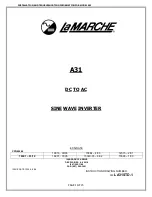
Lb/s (lb/s)
[35]
Lb/min. (lb/min)
[36]
Lb/hour (lb/h)
[37]
Lb ft (lb ft)
[38]
Ft/s (ft/s)
[39]
Ft/min. (ft/min)
[40]
Psi (Psi)
[41]
Function:
Select among different units to be shown on the display.
The unit is read out if an LCP control unit can be
connected, and if
[2] Reference [unit]
or
[3] Feedback [unit]
has been selected in one of
parameters 009-012 Display
read-out
, and in Display mode. The unit is used in
Closed
loop
also as a unit for minimum/maximum reference and
minimum/maximum feedback.
Description of choice:
Select the required unit for the reference/feedback signal.
4.5.1 VLT 2800 Regulators
The VLT 2800 has 2 integrated PID regulators, one to
regulate speed and one to regulate processes.
Speed regulation and process regulation require a
feedback signal back to an input. There are a number of
settings for both PID regulators that are made in the same
parameters, but selection of regulator type affects the
selections that have to be made in the shared parameters.
In
parameter 100 Configuration
, it is possible to select
regulator type,
[1] Speed regulation, closed loop
or
[3]
Process regulation, closed loop
.
Speed regulation
This PID regulation is optimised for use in applications in
which there is a need to maintain a particular motor
speed. The parameters that are specific for the speed
regulator are
parameters 417 Speed PID proportional gain to
421 Speed PID low pass filter time
.
Process regulation
The PID regulator maintains a constant process mode
(pressure, temperature, flow, etc.) and adjusts the motor
speed on the basis of the reference/setpoint and feedback
signal.
A transmitter provides the PID regulator with a feedback
signal from the process as an expression of the process's
actual mode. The feedback signal varies as the process
load varies.
This means that there is a variance between the reference/
setpoint and the actual process mode. This variance is
compensated by the PID regulator by adjusting the output
frequency up or down in relation to the variance between
the reference/setpoint and the feedback signal.
The integrated PID regulator in the frequency converter
has been optimised for use in process applications. This
means that there are a number of special functions
available in the frequency converter.
Previously, it was necessary to obtain a system to handle
these special functions by installing extra I/O modules and
programming the system. With the frequency converter
the need to install extra modules can be avoided. The
parameters that are specific to the process regulator are
parameters 437 Process PID normal/inverse control to 444
Process PID low pass filter time
.
4.5.2 PID functions
Unit of reference/feedback
When
Speed regulation, closed loop
is selected in
parameter
100 Configuration
the unit of reference/feedback is always
[3] RPM
.
When
Process regulation, closed loop
is selected in
parameter 100 Configuration
, the unit is defined in
parameter 416 Process units.
Feedback
Preset a feedback range for both regulators. At the same
time, this feedback range limits the potential reference
range so that if the sum of all references lies outside the
feedback range, the reference is limited to lie within the
feedback range. The feedback signal must be connected to
a terminal on the frequency converter. If feedback is
selected on 2 terminals simultaneously, the 2 signals are
added. Use the overview below to determine which
terminal is to be used and which parameters are to be
programmed.
Feedback type
Terminal
Parameters
Pulse
33
307, 327
Voltage
53
308, 309, 310
Current
60
314, 315, 316
Table 4.6
A correction can be made for loss of voltage in long signal
cables when a transmitter with a voltage output is used.
This is done in parameter group
300 Min./Max scaling
.
Parameters 414/415 Minimum/Maximum feedback
must also
be preset to a value in the process unit corresponding to
the minimum and maximum scaling values for signals that
are connected to the terminal.
Reference
In
parameter 205 Maximum reference, Ref
MAX
, it is possible
to preset a maximum reference that scales the sum of all
references, i.e. the resulting reference.
The minimum reference in
parameter 204 Minimum
reference, Ref
MIN
is an expression of the minimum value
that the resulting reference can assume.
All references are added and the sum is the reference
against which regulation takes place. It is possible to limit
the reference range to a range that is smaller than the
feedback range. This can be helpful to avoid an uninten-
Programming
Design Guide
94
Danfoss A/S © Rev. May/2014 All rights reserved.
MG27E402
4
4
















































